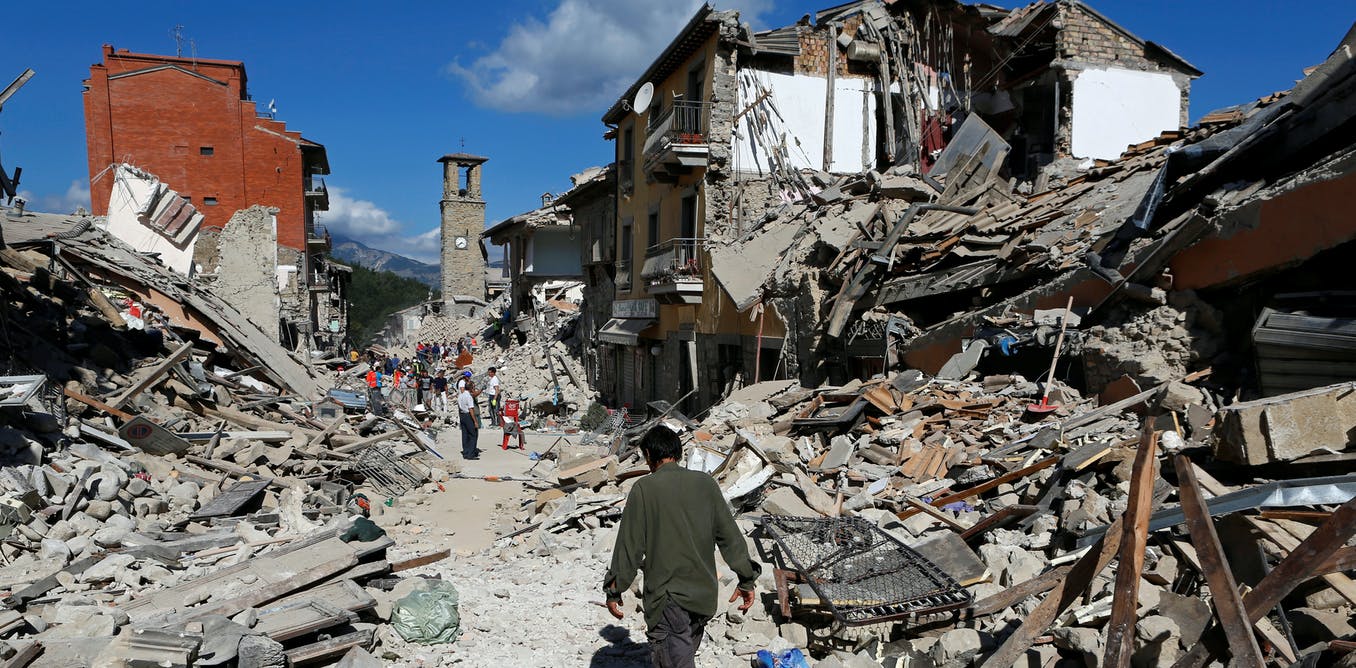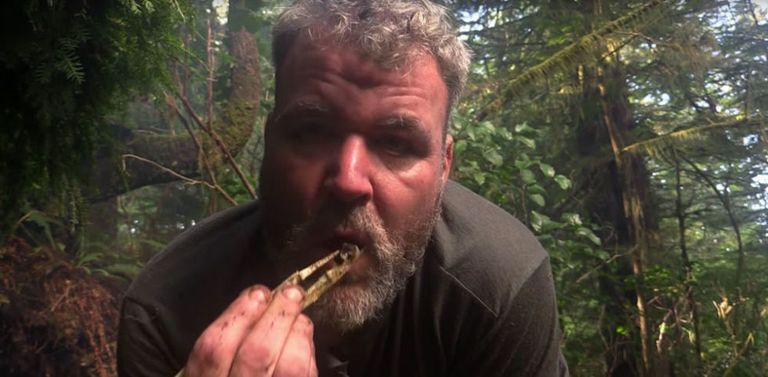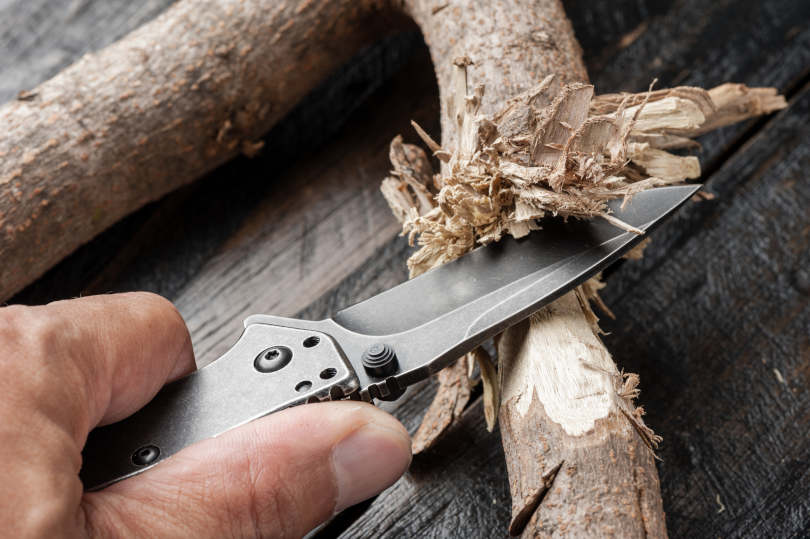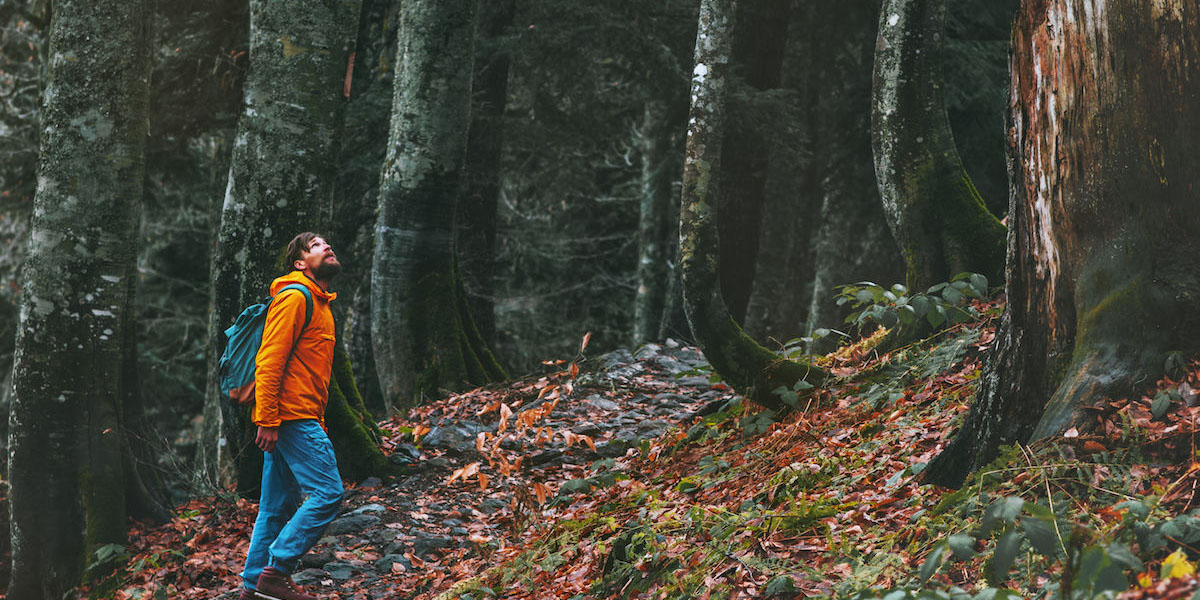If you spend any time in the woods whatsoever, you need to know how to survive being lost in the woods. At any time, even the most skilled hiker or hunter can lose his or her bearings and suddenly become lost. Getting lost in the woods can be a scary situation. Whether you've gotten lost on a hike, your car broke down on a wilderness road, or any other reason, surviving in the woods is difficult, but it can be done. You need to have water to drink, food to eat, shelter to sleep, and fire to cook and keep warm. If you can tend to your basic physical needs, you can survive in the woods then signal and wait for rescue.
Here is your complete guide on how to survive in the woods while lost with absolutely nothing.
With these tested tips and tricks, you’re sure to survive a stint lost in the woods, and emerge manlier than ever!
1. Find Water
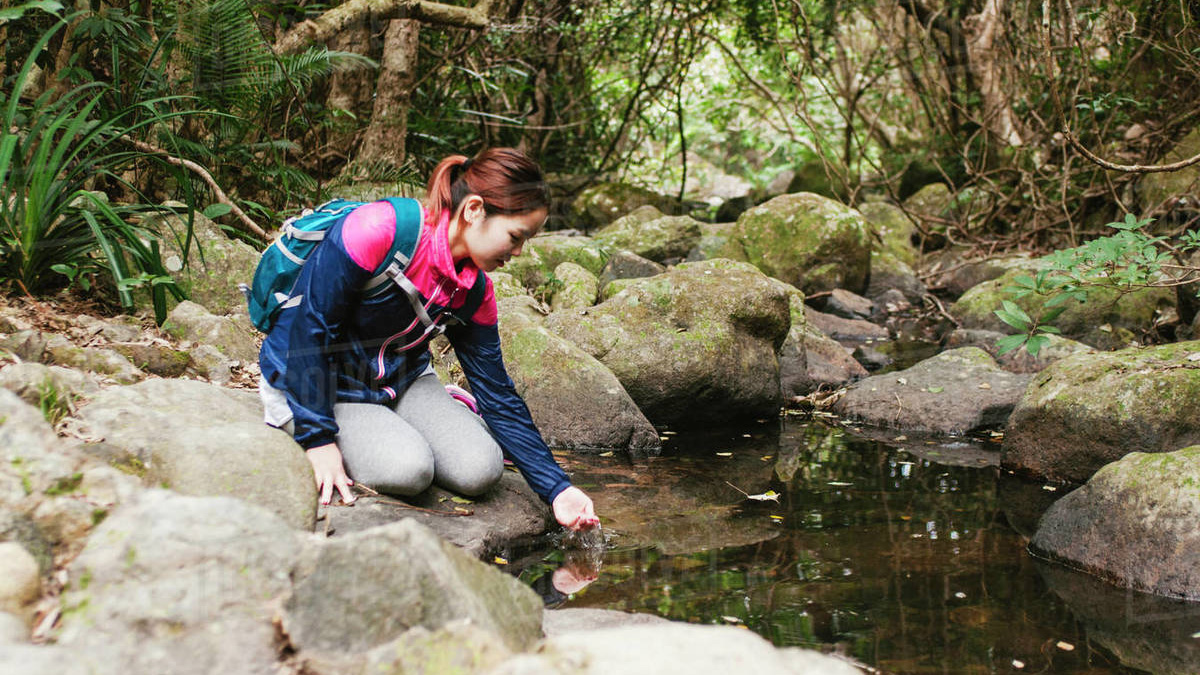
While humans can go up to 3 weeks without food, they can only survive for about 3 days without water. The body is made up of 60% water, and it is used for several functions including blood circulation, body temperature regulation, and helping you to keep your wits about you, which is especially important in any survival situation.
Thus, finding water should be your first priority once you realize you’re lost.
Start by looking for existing water sources like streams, springs, rivers, and lakes. Streams and springs are preferable because their movement means the water is less likely to contain bacteria.
Rivers are often polluted, and lakes and other stagnant bodies of water would be your last resort.
If you can’t immediately spot an existing water source, there are a few tricks to help you find one. First, stop walking and be still, and listen for the sound of running water. If that doesn’t work, look for animal tracks and follow them, as they almost always lead to water.
Still no luck? Head to a lower elevation if possible. Water naturally flows downhill, so you’re more likely to find a stream in a valley or canyon than in a flat, level area.
While it can be slow, collecting rainwater is a great method to obtain drinking water. Set out any containers you may have, or tie a tarp or poncho (some kind of plastic) between trees and let the water collect. You can also collect dew from plants by sopping it up with a cloth and then wringing it out.
Finally, try digging a well. Wherever there’s green vegetation, you’re likely to have groundwater seeping in after a few feet.
If you find yourself lost in winter somewhere there’s snow on the ground, that can be a great source of water. Just make sure it’s not yellow! And melt it before drinking. Eating something so cold can lower your body temperature enough to cause hypothermia.
No matter what method you use to obtain water, it should always be purified before drinking. The easiest way is to boil for 5 minutes, longer if at an altitude above 2,000 meters. Other methods include exposing water to direct sunlight- over 24 hours, the UV rays will kill many pathogens.
At the very least, make a crude filter out of cloth to filter out solid particulate matter. But remember, dirty water is better than no water.
2. Make a fire
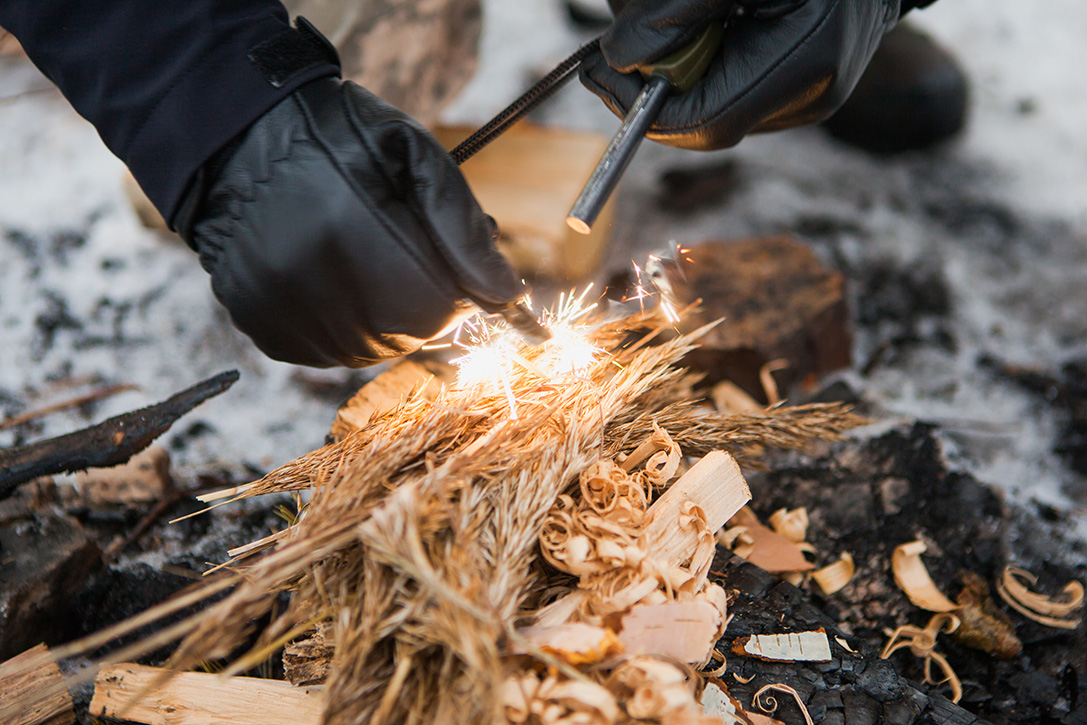
Once you’ve found water, the next order of business should be starting a fire. You can use fires to boil water, to cook, to keep warm, and as a way to signal for help.
Begin by creating a fire pit. Clear a patch of ground so that all that remains is dirt. Place rocks around the circle in a ring in order to prevent the fire from spreading. Make sure to choose a spot away from low-hanging branches and other vegetation.
Begin with a layer of tinder- materials that burn easily and help get the fire started. Things like wood shavings, wadded paper, or grass all work well.
Next, choose how you’ll arrange your kindling and firewood. A popular method is in the shape of a teepee, first arranging the kindling (small twigs) in a teepee shape and then the larger pieces of firewood around it. You can also arrange the kindling in a crisscross shape, with the firewood on top. Light with matches or a lighter and enjoy.
If you don’t have matches or a lighter, you have to get a little more creative. Flint and steel can be rubbed together to create a spark, or lenses found in eyeglasses, magnifying glasses, or binoculars can be used as well. Angle the lens toward the sun, focusing the beam onto a pile of tinder.
The manliest and most difficult way to start a fire is with friction. Using a flat piece of wood as your fire board, cut a small notch to rest the spindle in. Rapidly roll a long, thin stick between the palms of your hand until the tip of the stick glows red. Once an ember is formed, drop it onto a pile of tinder and gently blow on it till the flame catches.
3. Building a shelter
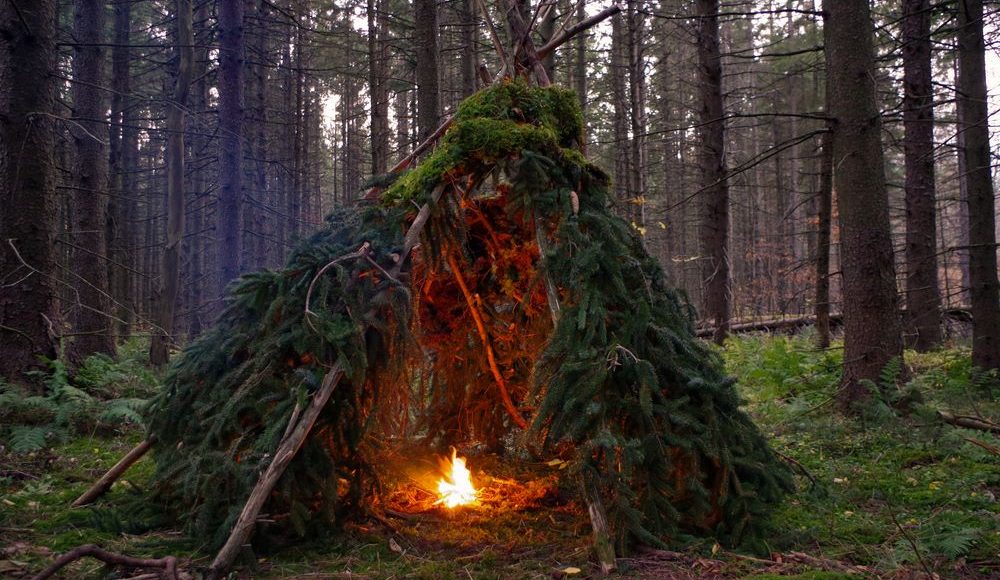
Choosing where to set up camp is just as important as how you set it up. Choose a flat site on level ground, at least 100 meters from rivers and streams- you don’t want to be swept away in a flash flood!
Avoid hilltops and exposed ridges as they can be cold and windy, as well as ravines, which can also become wind tunnels or fill with water quickly in a flash flood.
In addition, keep an eye out for large rotten trees or boulders, objects that could potentially fall and crush you. And finally, it helps to choose an area with lots of dead branches, sticks, and leaves already on the ground so you can minimize the energy you expend collecting materials.
One of the most highly recommended survival shelters is the A-Frame. Begin by looking for 2 trees that are about 6 feet apart, and wedge a sturdy branch between them about 4 feet off the ground. Next, collect slightly smaller sticks and lean them against the horizontal branch, forming the walls. To finish, layer dirt, leaves, and ferns or pine boughs against the walls for insulation.
A simpler structure if less insulation is needed is the lean-to. Just like with the A-Frame, select 2 trees 6 feet apart and wedge a branch between them. Prop smaller sticks against only one of the sides- choose the side that faces the direction that the wind is coming in. Finish by layering branches, dirt, and leaves for insulation. If extra warmth is needed, a small fire can be built on the open side.
Something to remember no matter what type of shelter you build is that you need to make a bed or build some kind of structure that keeps you off the ground. Even in warmer temperatures, laying directly on the ground can lower your body temperature to dangerous levels. Use folded over ferns or pine boughs, or even a pile of leaves to form a makeshift mattress.
4. Finding food

Once you’ve got water, fire, and a shelter, it’s time to look for food. Rule #1 of foraging is to eat only things that you are 100% sure are not poisonous. Stick to common plants like clover and dandelions, bugs like crickets and larvae, and any fish or small animals you’re able to catch.
With a large number of poisonous species and many lookalikes, mushrooms should be avoided. Also, be on the lookout for other warning signs that a plant might be toxic, like white or yellow berries, shiny leaves, milky sap, umbrella-shaped flowers, and thorns. Bugs that might be poisonous are often brightly colored. Also, avoid caterpillars.
Apart from a field guide, the only sure-fire way to test if a plant is poisonous or not is the Universal Edibility Test. First separate a plant by its leaves, stems, and buds- each part needs to be tested separately. Begin by rubbing the plant against the inside of your arm and wait 15 minutes for a reaction.
If nothing happens, repeat the process but on your lip this time. If still reaction-free, eat a small piece and wait 8 hours. If you feel ill, force yourself to vomit until your stomach is empty. If not, continue with the final step: eat a few bites and wait another 8 hours. If after all that you still feel fine, the plant you’ve found is not poisonous.
Other tips include climbing into trees with low-lying branches in order to look for eggs inside of bird nests. In addition, birds can be watched to further assess a plant’s edibility. If they’re eating it, it’s probably okay for you.
5. Protecting yourself from wild animals
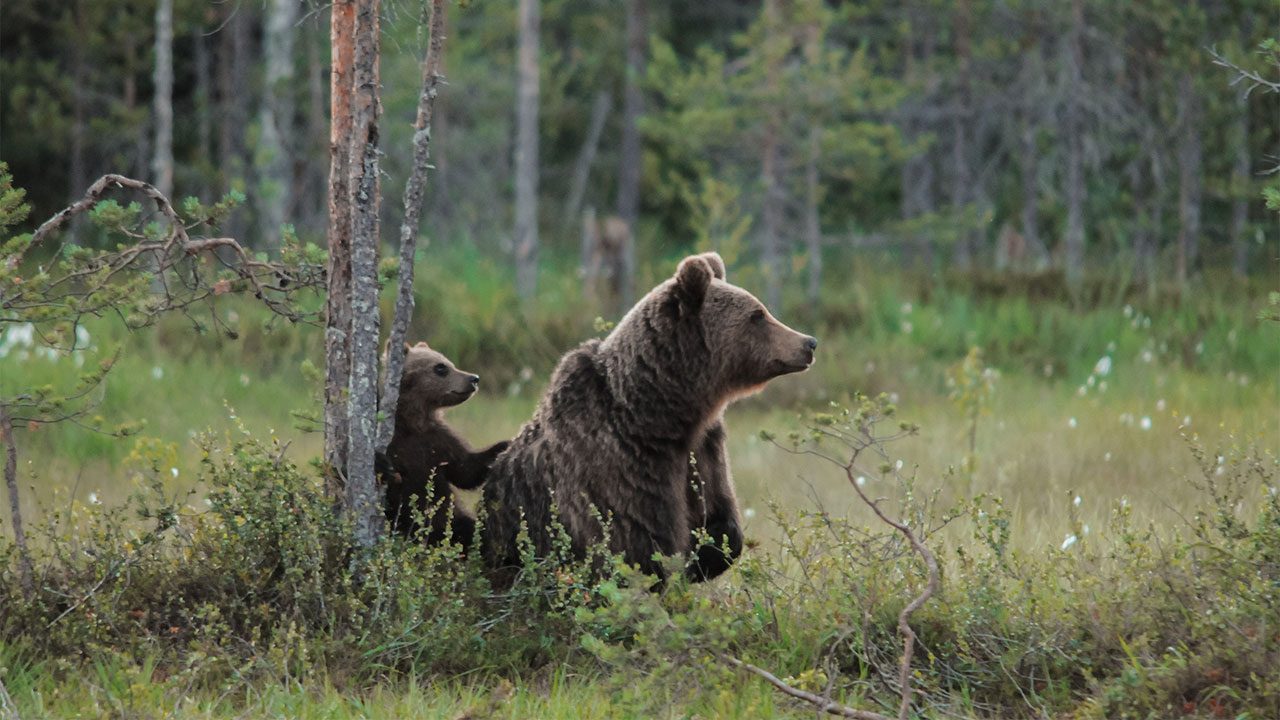
While in general animals are more afraid of you than you are of them, there are a few potential hazards you need to be aware of.
In a wooded environment, snakes are one of the biggest potential threats. To prevent bites, avoid tall grasses and dark places. Always be cautious when sticking your hand into a hole, between rocks, or inside of a hollow log- these are some of their favorite hiding spots.
If bitten, wash the wound immediately with water and soap to remove as much of the venom as possible. If you are in an isolated area with no chance of finding help, remain as still as possible.
Rapid breathing or walking will only increase circulation and thus the spread of venom. Keep the bitten area below the heart, and loosely tie a bandage 2-4 inches above the bite. This prevents the venom from spreading too quickly. Just make sure to not tie it tight enough to completely cut off circulation.
Whatever you do, do not attempt to suck out the venom with your mouth. The mucous membranes of the mouth are very porous and can help expedite the spread. Also, never cut out the flesh from around the wound. It’s often difficult to know exactly where the venom was injected, and open wounds encourage infection.
Bears are another animal that isn’t typically interested in humans, but will attack if provoked. Avoid attacks by making noise as you walk so you don’t surprise a bear, and cook at least 100 yards from your shelter. If you come across one, don’t scream, run, or make eye contact- those are all behaviors bears can perceive as threats.
If attacked, lay on the ground, protecting your neck and head, and play dead. Most bears will leave you alone once they’re sure you’re no longer a threat.
6. Signaling for help
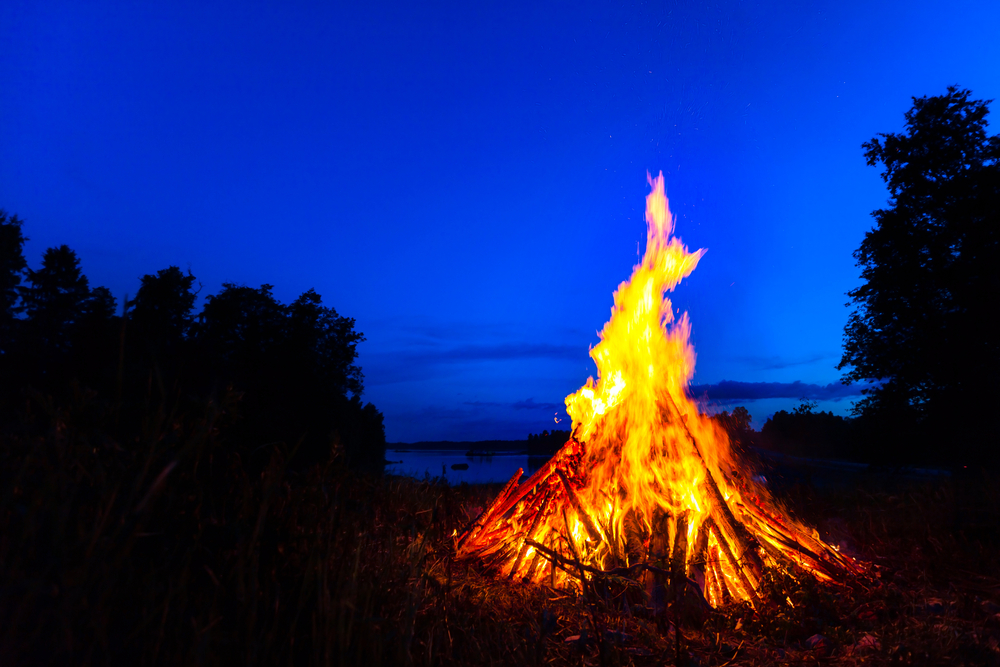
The most common method of signaling for help is creating a signal fire. This can be done by first creating a normal fire, with a foundation of tinder and kindling, with firewood piled on top.
The key to creating a signal fire is thick, black smoke which can be achieved by layering live, green vegetation on top. If you find yourself in a clearing or are able to make your way to the top of a hill, 3 fires laid out in a triangle shape is an international distress symbol.
If you can’t make a fire, 3 large piles of rocks or branches laid out in a triangle can work as well. Finally, mirrors can be used to reflect light to catch the eye of airplane or helicopter pilots.
7. Finding your way out
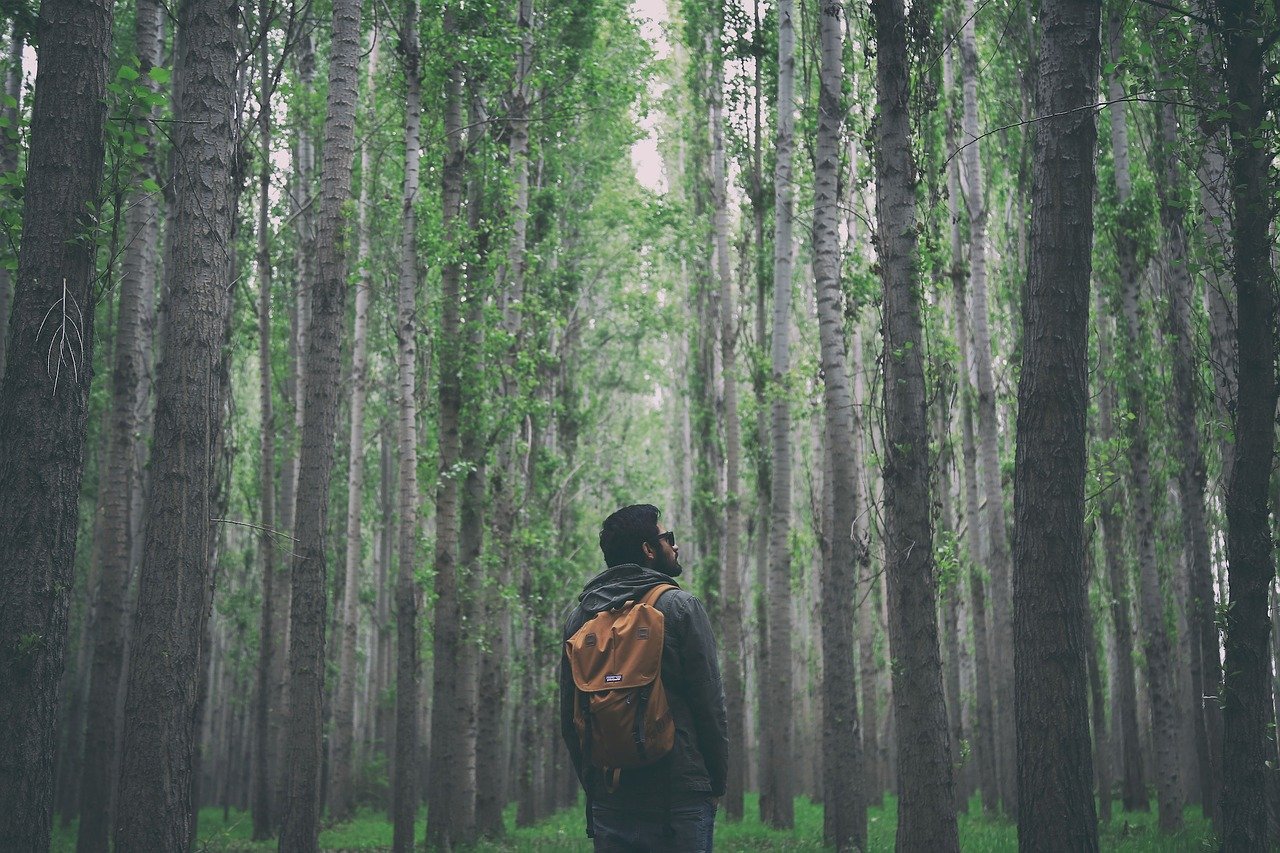
Only when you are absolutely sure that help is not coming your way should you venture out and look for help. As you set out, mark your path as much as possible by making rock piles, carving into trees you pass, or knocking down vegetation.
This way if you aren’t successful you can at least find your way back to your campsite.
Begin by walking up to the top of a hill or mountain in order to get your bearings and see if you can spot any landmarks. If this isn’t possible, remember that the sun rises in the east and sets in the west, which can help you if you remember which direction you came from.
Another way to understand direction without a compass is the classic moss on a tree method. While many people are skeptical of this technique, it actually works if you find the right kind of tree.
Look for a tree in a clearing that is receiving sun on all sides. Generally, moss prefers to grow in the shade, and the side of trees that receive the most shade is the northern side. Finally, following a stream or river downstream or downhill will usually lead to civilization eventually.



